For the past thirty years, there has been a steadily increasing number of historical and unexplained archaeological discoveries made at many sites.
Some recent discoveries of ancient technology and simple tools such as ancient stone tools around the world prove that the first ancient humans were already quite evolved.
They have been classified as “out-of-place” artifacts due to the highly controversial and mysterious nature of artifacts found in geological strata where nobody expects them to be.
The Sophistication of Paleolithic Art
Some historians believe that the Quaternary man was not just an ape, but fully human. Prehistorian Robert Silverberg, for example, considered Paleolithic art to be very sophisticated:
The cave paintings are upsetting to those who prefer to think of Quaternary man as little more than an ape. Not only do they indicate great craftsmanship, but also point to a whole constellation of conclusions: That primitive man had an organized society with continuity and shape, religion and art.
Research supports the evidence that Stone Age men lived in well-constructed houses. The paintings in Lascaux Caverns, which correspond with the fossil record of the Upper Paleolithic time, appear to be very original and profuse. The paintings were created across many generations, estimated to span around 17,000 years.
Also, the caves still have holes in the rock that support wooden crossbeams. Cro-Magnon people used these crossbeams to hold the scaffolding they used to work on the cave ceilings, ten to twelve feet above the cavern floor, similar to the construction work Michelangelo used many millennia later.
Secrets of Advanced Architecture
Although many modern architectural designs are beautiful and unique, the ancients were famous for their unique architectural skills. Some structures, such as the pyramids of Giza, are among the greatest wonders of the world, built so well that they would outlast any modern building.
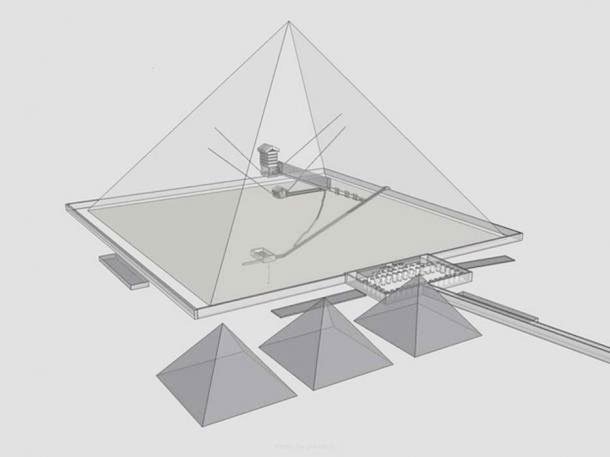
Pyramids of Giza Underground Chambers.
by R.F.Morgan, CC BY-SA 3.0 via Wikimedia Commons
For centuries, many have wondered how the pyramids were built, and many still question how the ancients were able to move huge rocks, weighing several tons, without advanced machinery tools.
According to the Lost Ancient Technology book, evidence strongly suggests that some of these great works were in fact created thousands of years before the dynastic Egyptians and that the pharaohs simply inherited and renamed them. Few scenarios have been proposed to explain how the famous pyramids were erected. In his book, A Treatise on Cosmic Fire, Mahatma Dhut Kuhl mentions the force of sound:
The laws governing the erection of large buildings and the handling of great weights will someday be understood in terms of sound…They were raised through the ability of the early builders to create a vacuum through sound.
The monumental Khufu pyramid is located at what is found to be the center of the earth’s landmass, and the pyramid is aligned to the true geodetic North.
Information about such a precise location is not expected to come from ancient Egypt, but rather from modern scientists who have comprehensive knowledge of earth geography and a Mercator projection. Engineers and scientists agree that today, it would be extremely hard to replicate such a structure, with its precise location, even by using modern technology.
Prehistoric construction and civilization discoveries also reveal prehistoric advancement. For example, in 1965, at a site that is now called Starveco, on the Danube River located on the Yugoslavian and Romanian border, archeologists uncovered traces of a Roman road and architectural sophistication.
After digging further, fragments of proto-Greek pottery, Neolithic remnants, and traces of Mesolithic cultural artifacts were found.
The additional digging also revealed something unexpected — the remains of a cement floor. After material examination, it was found to be an amalgam of limestone, water, and sand, a very sophisticated construction several millennia ahead of its time. The cement layers were carefully laid out in large slabs to form the foundations of houses.
Several layers were built, one on top of another, meaning the buildings were constructed and reconstructed over some time. Even more interesting, the archeologists discovered no evidence of a gradual development from a simple to a complex pattern. The layout of the houses was the same throughout all the represented timeframes.
The Starveco village was very professionally built and was abandoned in the same advanced state. The houses were proportionally built with a ratio of 3:1 or 4:1, and the larger side always faced toward the river for a better view of the Danube and the hilly countryside.
The positioning of the houses and things inside provides significant evidence that ancient people had a good knowledge of math and geometry. The skeletons found in Starveco were robust, lacking deformity or evidence of disease, indicating that the people were strong and healthy.
Chand Baori
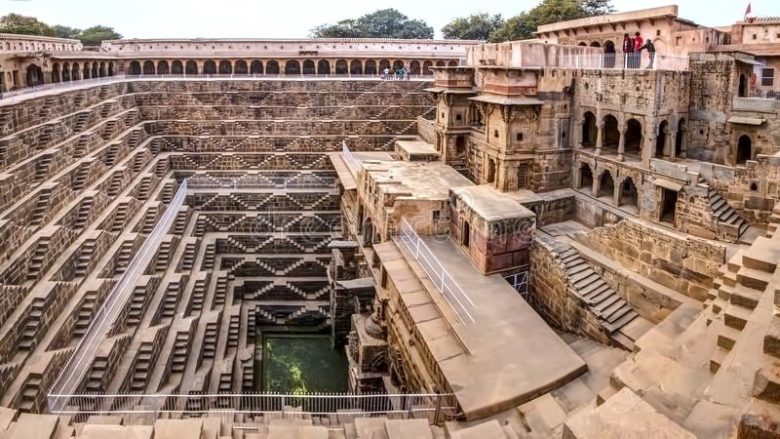
Chand Baori stepwell.
Image by Amith Nag via Gettyimages
Chand Baori was a city that was originally named “The City of Brightness” (Abha Nagri), located in India. The place features 3,500 narrow steps, covering 13 stories and extending 100 feet into the ground, forming a rather deep stepwell in India.
Chand Baori was built by King Chanda of the Nikumbh dynasty between AD 800 and AD 900. The city was dedicated to Hashat Mata, the goddess of joy and happiness. The deep stepwell was built in a way that let cooler air in for community gatherings, a rather advanced structure for the primitive people of AD 800.
The Masterpiece of Petra in Jordan

The Monastery Petra in Jordan.
Image by Diego Delso, CC BY-SA 3.0 via Wikimedia Commons
The extraordinary city of Petra, or Raqmu, is an archaeological and historical city in southern Jordan that was established in the 4th century BC. It is located on the slope of Jebel al-Madhbah, in a basin among the mountains.
Most of the city remains underground, still untouched, with only 15 percent of the city uncovered by archeologists. For centuries, the city was empty and nearly in ruins. In 1812, a Swiss traveler discovered a mysterious place. In 2007, it was considered to be one of the Seven Wonders of the World.
Temple Of The Three Windows
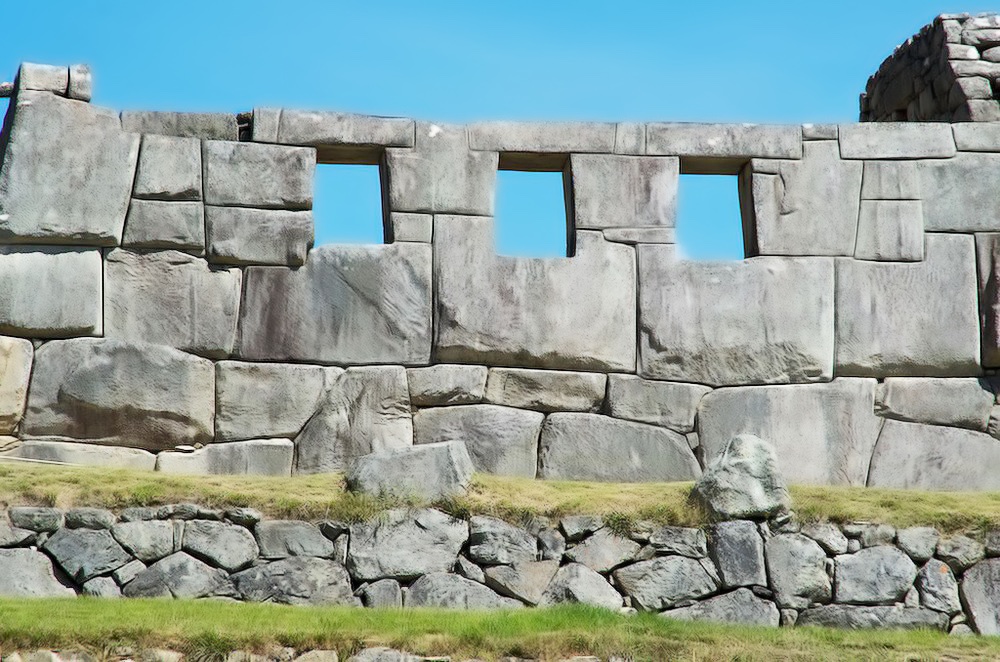
Temple of the Three Windows Machu Picchu Peru.
by Jopstock Gettyimages
The three windows represent each part of the world: Uku-Pacha represents the underground world, Hanan-Pacha represents heaven, and Kay-Pacha represents the present time. These windows were set up in a special location to observe the rising sun, an important event in the everyday life of Incan culture.
The temple had minerals with healing properties, so the Incas used this temple as a bath to cleanse their minds and bodies and to cure any type of sickness or pain. This temple was built unusually, so perfect that neither a razor blade nor hair could enter between the rocks. The rocks were put on top of one another in a very precise way, especially for the culture and people of that time.
Out-of-Place Artifacts
Brad Steiger, in his recent book, Worlds Before Our Own, presents new facts about early advanced societies. He writes that some advanced human artifacts have been found in the lowest primordial geologic strata, while primitive artifacts have been found in the upper strata.
He and other researchers label these items as “out-of-place artifacts” (OPA) because they appear to be out of their proper place in time. In his book, he documents his discoveries from the past 30 years that contradict the current worldview of the ancient past.
Some previous discoveries reveal that ancient people were able to operate a flying machine. There are a few preserved records that mention the flight. For example, a Babylonian set of laws, called Halkatha, talks about operating a flying machine:
The privilege of operating a flying machine is great. The knowledge of flight is among the most ancient of our inheritances. A gift from ‘those from upon high’. We received it from them as a means of saving many lives.
In 1969, an international scientific report was published describing an unknown period of technological development found at Site Medzamor in Soviet Armenia.
In 1886, the scientific journals Nature (London, 1886) and L’Astronomie (Paris, 1887) published articles about the discovery of a small metal cube inside a block of coal from the Tertiary period. It measured 2.64 by 2.64 by 1.85 inches, weighed 1.73 pounds, and had a specific gravity of 7.75.
The edges of this ancient cube were perfectly straight, and tests revealed that the cube was composed of a steel-nickel alloy. Around the cube, archeologists identified a long, narrow cut or depression indicating that the cube was machine-made and part of a larger mechanism.
The Sifrala is a technical manual found in Chaldea, 5,000 years old and over 100 pages long, describing how to build a flying machine. Some of the technical terminologies used are words like copper coils, graphite rod, crystal indicator, stable angel, vibrating spheres, etc. Ancient Magi knew how to generate force by using rods of gold with special energizing powers. They called this process rukha shakintu (Aramaic).
Some “out-of-place” artifacts, unlike other things, somehow didn’t end up in private collections. The Quimbaya (Tolima) airplanes found in Colombia are well-known artifacts that are currently on display in the Bogota Museum.
These airplanes are 2 to 3 inches in length and represent golden artifacts that were made by the Quimbaya civilization, dating from approximately 1000 BC to AD 1000. These airplanes were described in a mainstream medium as a representation of birds, lizards, amphibians, and insects.
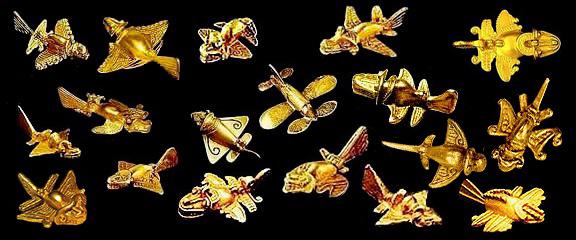
The Quimbaya (Tolima) Airplanes.
Image by Ivan, CC BY-SA 4.0 via Wikimedia Commons
These designs resemble prototypes of modern airplane designs, tested by independent researchers and proven to be aerodynamically accurate. These models can fly with both simple single-propeller power and jet power. The golden objects may represent the aerodynamic knowledge that the Quimbaya civilization had, or they may represent visions people may have had about future technology.
Another popular example is the Abydos Vehicles hieroglyphs on Ceiling Beams of Temple of Seti I at Abydos. Their similarity to modern flying vehicles is impressive. Similar to the previous example, it could simply represent birds and insects, but very likely they represent actual images of flying objects used by earlier civilizations. Unfortunately, they are the product of two sets of hieroglyphs, one overlaying another.
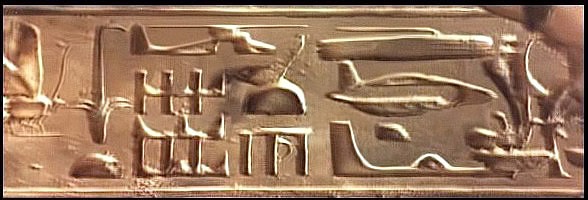
Abydos Vehicles in Temple of Seti I at Abydos.
Image by Dsjessee via Wikimedia Commons
The archeologist could uncover even more similar hieroglyphs, however, in the past, it was a very common practice for the next generation to erase or destroy the art record of a previous culture, as happened to the ancient Egyptian female pharaoh, Queen Hatshepsut.
Her female form images were changed to images of a male form. Thutmosis erased all traces of Hatshepsut’s name upon taking power, and all representations of her female figure were replaced by images of a male king.
The great 3,000-year-old space module in the Istanbul Archaeology Museum is called the Toprakkale Space Shuttle, believed to be a sculpture from the kingdom of Urartu. The artifact has five engines and is 23 centimeters long. Some researchers, who had examined the artifact, pointed out that the object was made from a porous material that was likely a stone made out of volcanic ash.
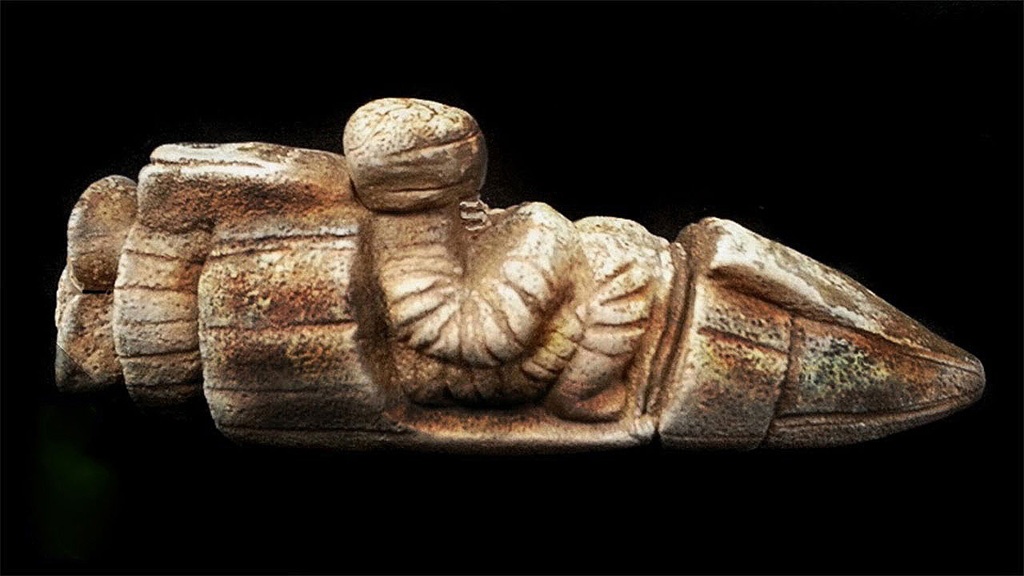
Toprakkale Space Shuttle figurine.
Image by bizsiziz.com
Alexander the Great witnessed “dozens of silver disk-like objects” entering and leaving the Jaxartes River in 337 BC. After the encounter, he became interested in crafts and spent many hours in a primitive diving bell searching for them (Source: “Unidentified Submarine Objects” by History Channel).
Some historians in the past knew a lot about ancient cultures. Historian Will Durant commented:
Immense volumes have been written to expound our knowledge, and conceal our ignorance, of primitive man…primitive cultures were not necessarily the ancestors of our own; for all we know they may be the degenerate remnants of higher cultures…
If advanced societies did exist, what destroyed them? And why they didn’t foresee the future or receive a warning when a natural or man-made disaster hit them?
Either these societies were so advanced that they brought destruction upon themselves, or they were hit by a natural force. Evidence shows that there were both, natural disasters and some indications of ancient warfare:
When the first atomic bomb exploded in New Mexico, the desert sand turned to fused green glass. This fact, according to the magazine Free World, has given certain archaeologists a turn. They have been digging in the ancient Euphrates Valley and have uncovered a layer of agrarian culture 8,000 years old, and a layer of herdsman culture much older, and a still older caveman culture. Recently, they reached another layer, a layer of fused green glass. (New York Herald Tribune, 1947)
When certain groups or nations ignore spiritual laws and strive for dominion and power by constantly fighting with others, sooner or later they start to abuse their power, slowly damaging the world around them and running out of resources to survive.
Many recent findings of ancient technology and other unexplained archaeological discoveries can prove that at some point in the past, there were signs of more advanced civilizations. Great civilizations can be destroyed quickly, returning to a primitive form in the blink of an eye. End-time scenarios are numerous, but the next civilization can learn a lot from the mistakes of previously fallen civilizations for a better future.
*As an Amazon Associate, I earn from qualifying purchases.

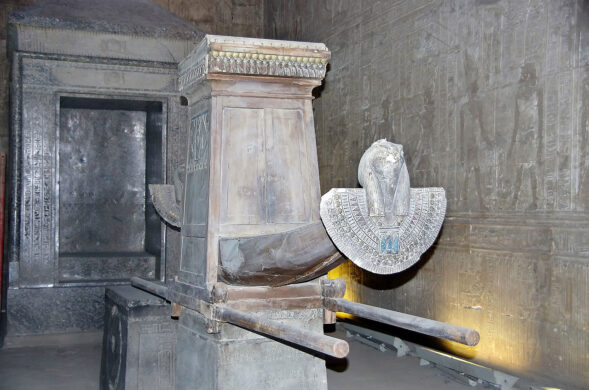


2 Comments
I enjoyed the stories about the true events of our people’s history. This actually proves that the Bible is fully accurate. Thank you very much for the wonderful gathering together of multiple times and facts.
Thank you for your comment 🙂 I was searching for answers and love the fact that there is light at the end of the tunnel..
Comments are closed.